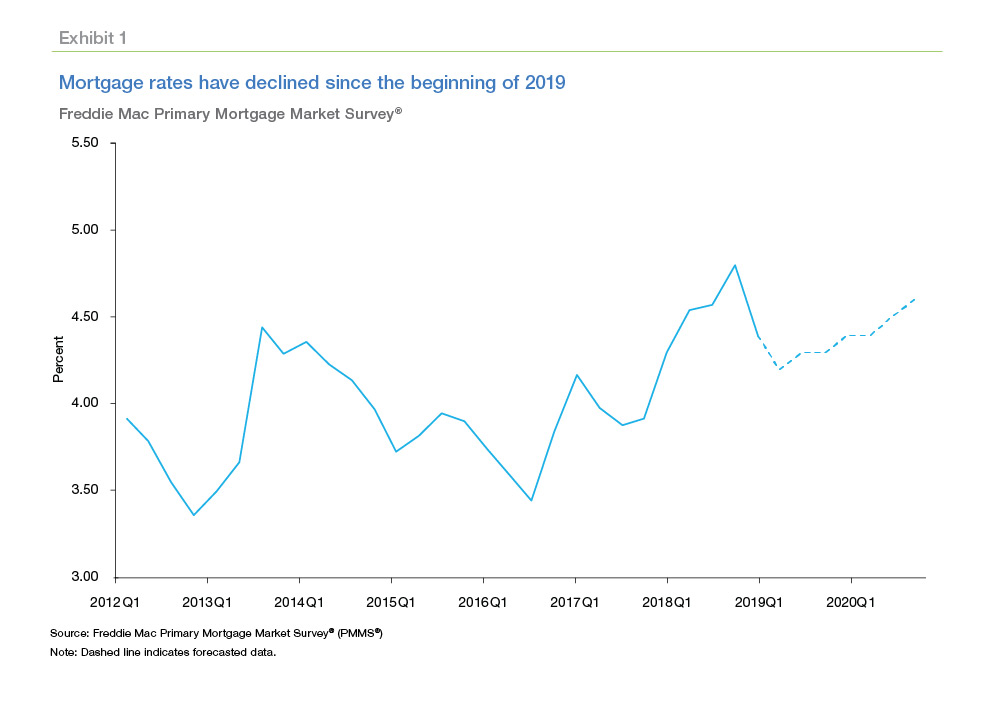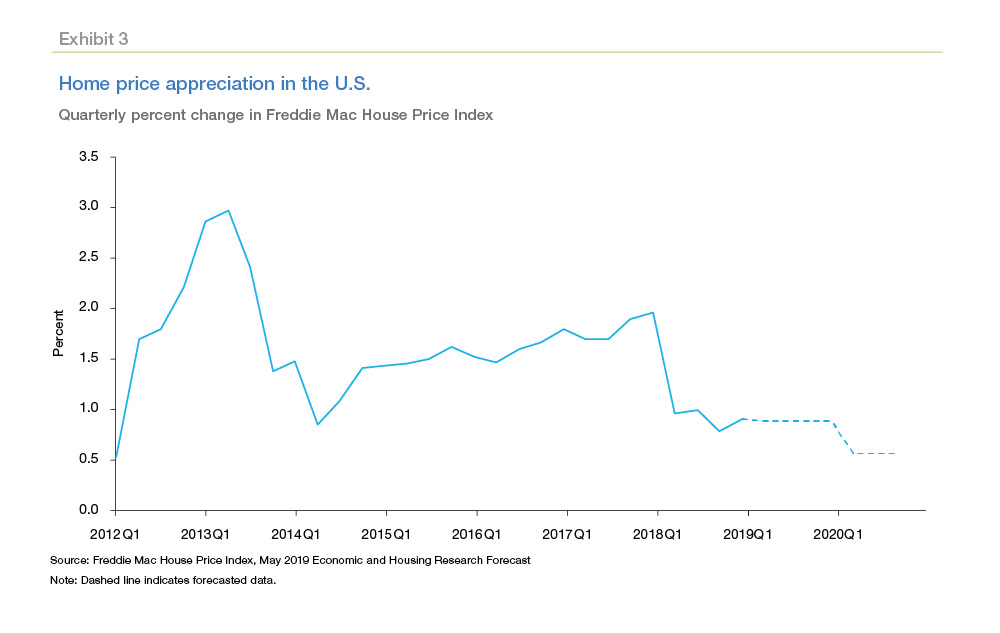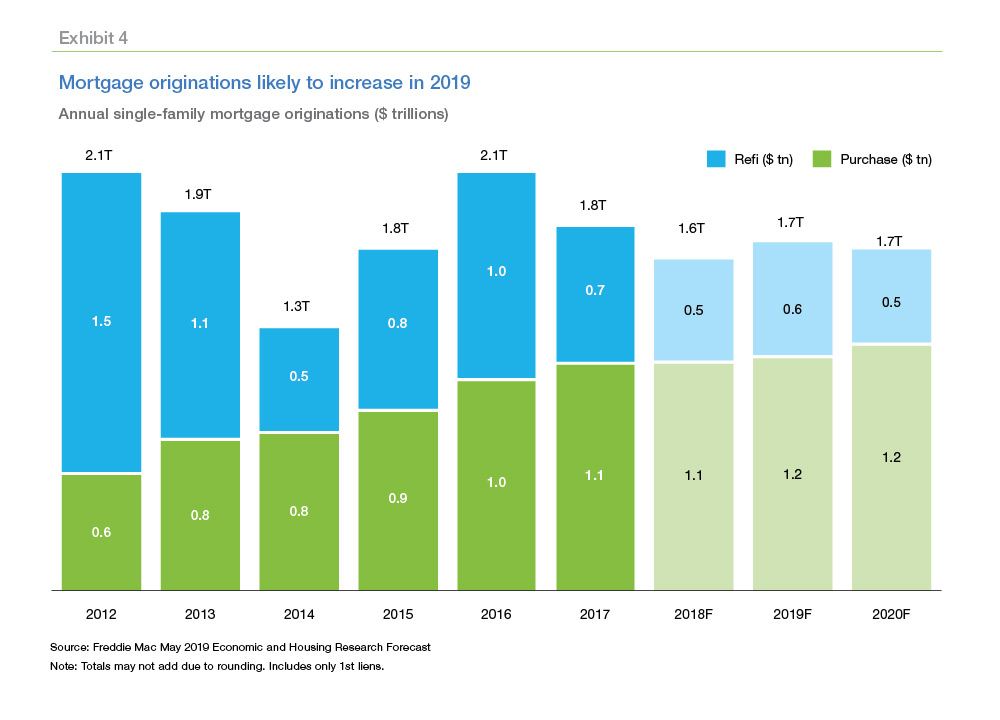Freddie Mac's May Forecast continues to look for a downward trending interest on the 30-year fixed-rate mortgage. The company's economists are project an average rate of 4.3 percent this year with a small increase to 4.5 percent in 2020. Coupled with a strong labor market, low unemployment, and "modest" wage growth, this should mean a steadily growing housing market this year.

The forecast is for total housing sales, both new and existing, to slightly best the 2018 number of 5.96 million units, rising to 5.98 million. Existing home sales will account for 5.35 million of the total and new home sales for 630,000 units. Sales in 2020 are expected to be even better, at 6.14 million overall.
Housing starts will be flat this year, with single-family starts gaining 0.01 million units to 0.88 million and multifamily declining by the same amount to 0.37 million. Single-family starts are projected to take off in 2020 however, jumping to 0.98 million units while multifamily starts tail off to 0.35 million.
Home price growth in the first quarter was slightly higher than forecasts anticipated so Freddie Mac has revised its expectations for the year's growth from April's 3.5 percent to 3.6 percent. However, they are holding to the earlier 2020 home price forecast for a2.6 percent increase.

The declining interest rates are expected to provoke a recovery from the 2018 slump in mortgage originations, providing an impetus to first-time homebuyers and to those homeowners looking to refinance. The total originations volume in 2018 of $1.636 trillion will grow to $1.733 trillion this year then level off to $1.701 trillion in 2020.

The company is revising the composition of its forecasts for residential mortgage debt. They have previously included multifamily mortgages but will now forecast the growth rate for single-family residential debt of households and nonprofit organizations. That new forecast is for the rate of growth in outstanding debt to b 2.9 percent both this year and next.
Freddie Mac's April Forecast was written before the first estimate of the first quarter's growth in Real Gross Domestic Product was released. That number far exceeded expectations at 3.2 percent. This month's Forecast attributes the unexpected growth to "transitory" factors like private inventory investment that are unlikely to persist throughout the year. However, given the growth rate, Freddie Mac has revised its 2019 GDP projection from 2.0 percent to 2.3 percent. The forecast for 2020 remains at 1.8 percent.
The April Jobs Situation report from the Bureau of Labor Statistics included an estimate of the unemployment rate at 3.6 percent, a 50-year low. Freddie's economists have lowered their unemployment rate forecast accordingly to 3.7 percent. Overall, they expect the rates to be 3.8% and 3.9% in 2019 and 2020, respectively.







